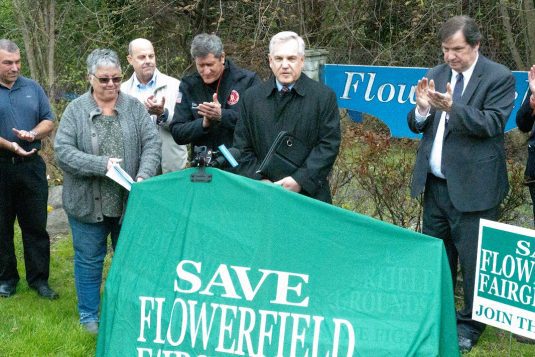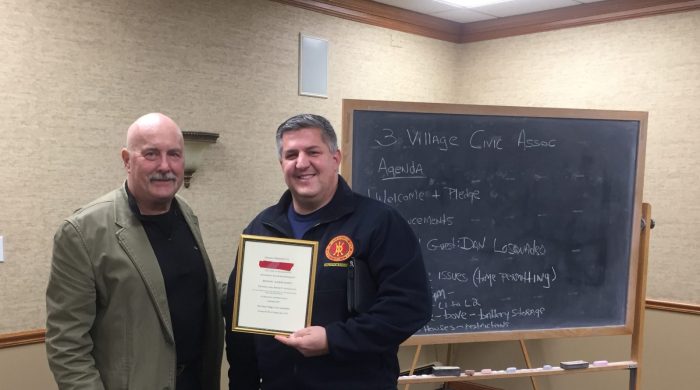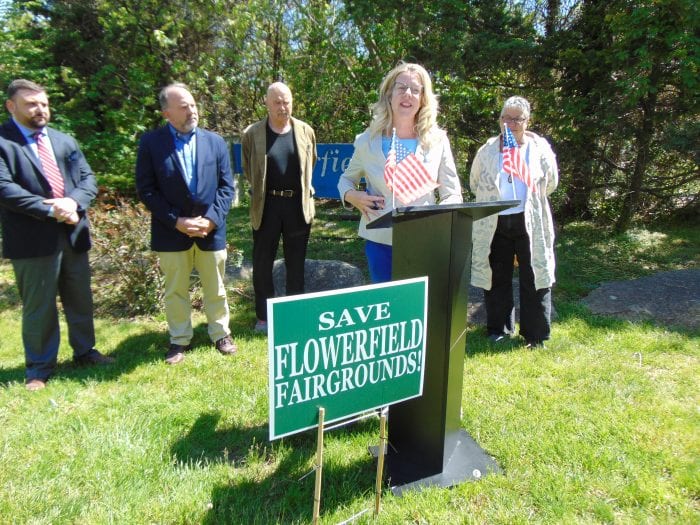By Mallie Jane Kim
Local parks and trails took center stage at the Three Village Civic Association monthly meeting Monday night, June 5. The civic’s land use chair Herb Mones took attendees on an impressive slideshow tour of the area’s offerings for walkers, cyclists, view seekers and the like.

These natural spaces “are unique and different, and enable us to be proud that we’re Three Villagers,” Mones said. “I always say there are two types of people: Those that live in Three Villages, and those that want to live in Three Villages.”
Among the more-than-20 properties Mones highlighted were well-known spots such as Frank Melville Memorial Park, Avalon Nature Preserve, Gamecock Cottage and the Setauket-Port Jefferson Station Greenway Trail.
Also featured were lesser-known gems such as McAllister County Park located in Belle Terre near the eastern entrance to Port Jefferson Harbor; Old Field Farm County Park adjacent to West Meadow Beach; and the Besunder property on North Road at the entrance to Strong’s Neck.
Nearly all of the sites on Mones’ slideshow boast trails or harbor views, or both. Among his favorites, he said, is the Flax Pond Tidal Wetland Area.
He also mentioned a particular point of pride in Patriots Rock Historic Site, acquired by the Three Village Community Trust. “For the first time in 300 years, the site is open to the public,” said Mones, who is president of the trust. According to him, the trust plans to add trails surrounding the location to enable the public to enjoy the entire property.
There are also undeveloped, “emerging” places to watch, Mones said, such as the Suffolk County parkland known as the Sand Pits along the Greenway Trail; the Patriots Hollow State Forest across from the shopping center on Route 25A in East Setauket; and the Stephen D. Matthews Nature Preserve in Poquott. Each of those areas, he said, could use trails and added public access.
Mones urged members to keep a careful watch over these local natural assets. “Parks are so special, parks are so desirable, parks are so beautiful that you have to be ever vigilant because somebody is always trying to acquire, buy and obtain it,” he said.
Mones added that he plans to publish his presentation on the civic association Facebook page.
Police scam warnings
Also at the meeting, Suffolk County Police Community Liaison Officer Sergio Moller, from the 6th Precinct, warned about the prevalence of scams popping up in the area, particularly electronic scams.
According to Moller, residents are receiving texts purportedly from utility or media companies warning service will be halted unless the person clicks a link to pay their bill. “What a scammer wants you to do is hit that link, so they can get access to your computer,” he said at the meeting. “So don’t do that, please.”
He also urged the audience to be skeptical of calls from an unknown number alleging a loved one has been arrested or needs money — even if the voice on the other line is familiar. “Artificial intelligence can reproduce your voice to a T, so it may sound like you’re talking to your grandson … it may sound like you’re talking to a loved one,” he said.
As with the texting scams, Moller said people should call the person’s known phone number to verify whether they actually need assistance.
“Please don’t give money to anybody, especially if they ask you for gift cards,” he said. “If they are asking you for gift cards, this should be an automatic red light in the back of your head that this is not legit.”
Birds and Bees Protection Act
George Hoffman made an impassioned plea for civic members to lobby state Sen. Anthony Palumbo (R-New Suffolk) and state Assemblyman Ed Flood (R-Port Jefferson) to support the imminent Birds and Bees Protection Act.



















